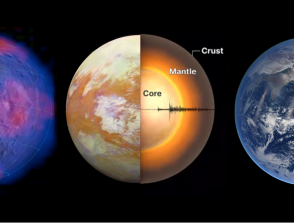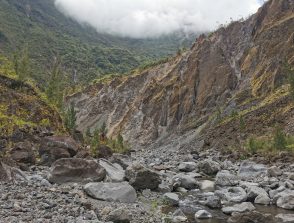Geomorphic Transports in Terrestrial and Planetary Critical Zones
13/10/2025
IPGP - Îlot Cuvier
15:00
Soutenance d'Habilitation à Diriger des Recherches
Salle 310
Antoine LUCAS
Géochimie des enveloppes externes (GEE)
The granular materials-whether they descend slopes as avalanches of debris or rock, or are shaped by wind into vast sand seas-dominate many solid bodies within the Solar System. These processes that shape planetary surfaces serve as witnesses to forcing mechanisms.
The study presented condenses a decade of research on sediment mobility, conducted quantitatively and integrated with: (i) physical or phenomenological models along with numerical simulations of sediment transport; (ii) multi-wavelength remote sensing measurements supported by radiative modeling and photogrammetry.Applied to the dune fields of Titan, Mars, and Earth's deserts, these approaches demonstrate how aeolian conditions, sediment supply, and substrate texture (whether rocky or icy) influence the orientation and wavelength of dunes. They also quantify transitions between dust and sand that feed into planetary atmospheric cycles.
This framework offers a new perspective on slope instability phenomena such as landslides and debris avalanches. Analyzing the morphodynamic system through the Solar System reveals a common phenomenological framework, allowing observations, measurements, seismic recordings, and numerical modeling to be reconciled.
Finally, this approach retraces the mechanics of propagation and upstream-downstream coupling between slope instabilities (e.g., landslides, debris avalanches) and fluvial responses.
This work leads to numerous methodological and thematic insights. Notably, it seeks a better understanding of how changes in climatic conditions affect sediment transport over different time scales. For example, if it is demonstrated that permafrost degradation increases instability occurrences, the study also explores whether these instabilities' behavior is similarly impacted. This has implications for sediment availability, unaltered material availability, and carbon fluxes on Earth. By linking granular physical processes with remote sensing and comparative planetary science, this work provides a coherent framework to interpret-and ultimately predict-geomorphological traces of climate change on Earth.
The defense will take place before a jury composed of:
Valérie Ciarletti - Rapportrice, Professeure des universités, UVSQ – Université Paris-Saclay
Jean-Philippe Avouac - Rapporteur, Professeur, Caltech (Remote)
Jérôme Gaillardet - Rapporteur, Professeur des universités, IPGP
Naomi Murdoch - Examinatrice, Directrice de recherche, ISAE-SUPAERO
Jennifer Druhan - Examinatrice, Professeure, Illinois University (Remote)






